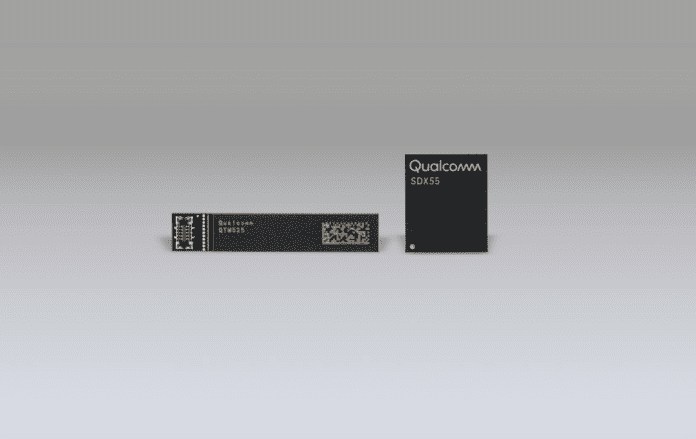Qualcomm X55 5G modem extends support to both millimeter wave and sub-6 GHz frequencies
With Mobile World Congress Barcelona set to get underway next week, expect to see a number of 5G New Radio capable device launches to support early operator deployments. Almost all of this first wave of Android-based 5G handsets will be powered by Qualcomm’s X50 modem. And despite this first wave of devices just now being revealed, Qualcomm is prepped for a second wave with its X55 modem, announced today.
The seven-nanometer chip supports both the 5G NR non-standalone and standalone variants in millimeter wave and sub-6 GHz frequencies, and TDD and FDD modes of operation. X55 supports up to 7 Gbps download speeds and 3 Gbps upload speeds.
Qualcomm’s Ignacio Contreras, director of 5G marketing, called X50 “an instrumental piece” of the 5G kickoff with more than 30 design wins. “Just like X50, [X55] will be instrumental in the second wave of 5G devices” expected in the second half of 2019.
Hints of an new 5G modem came out of Qualcomm’s Snapdragon Tech Summit in December with AT&T announcing a 5G Samsung device to support its millimeter wave network in the first-half of this year, and a follow up device in the second-half as the carrier expands 5G NR to its sub-6 GHz holdings.
Contreras noted that X55 will go beyond just handsets to support other 5G equipment, including mobile hot spots, fixed wireless access devices, laptops and automobiles making “inroads across many different segments,” aligning with Qualcomm’s broader strategy.
Qualcomm updates millimeter wave antenna modules and RF front end
Last year Qualcomm released a millimeter wave antenna module, breaking a pattern of skepticism regarding the use of high-band spectrum devices given challenges around wave propagation, and hand- and body-blocking.
In tandem with the X55 announcement, the San Diego, Calif.-based chipmaker updated the module by reducing the height to accommodate smartphone designs less than 8-millimeters thick and added support for the 26 GHz band for the U.S. market.
The module is part of a second generation RF front end design developed by Qualcomm, which also includes a 5G envelope tracking solution, integrated 5G/4G power amplifier and diversity modules and an adaptive antenna tuning solution.
Company President Cristiano Amon explained the importance of the 5G product updates: “OEMs face a range of formidable design challenges when it comes to 5G. The need to support multimode operation from 5G to 2G, along with an ever-increasing number of band combinations, brings unprecedented complexity. Discrete modem or RF solutions are no longer sufficient. Qualcomm Technologies is unique in the mobile industry by offering a comprehensive modem-to-antenna solution, and we are pioneering efforts in all aspects of 5G and ready to enable our customers with these capabilities to help them commercialize the first wave of 5G devices this year.”

